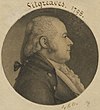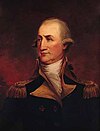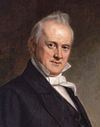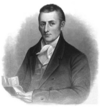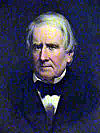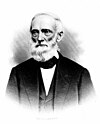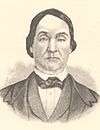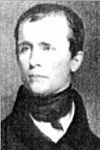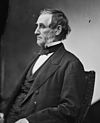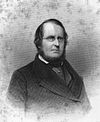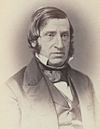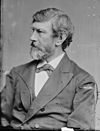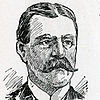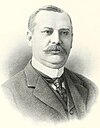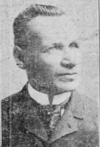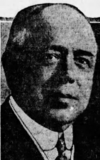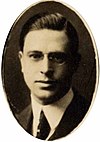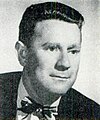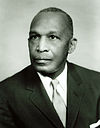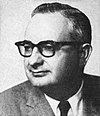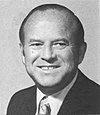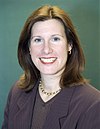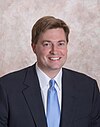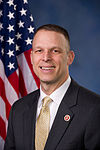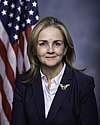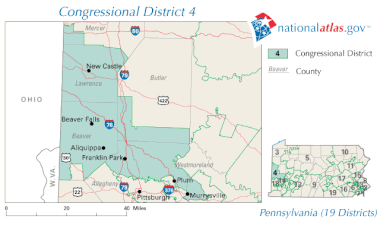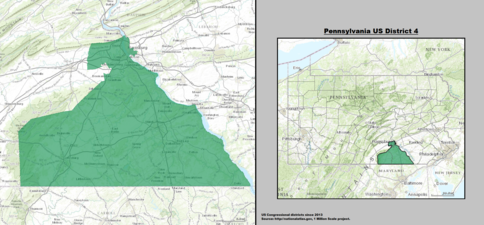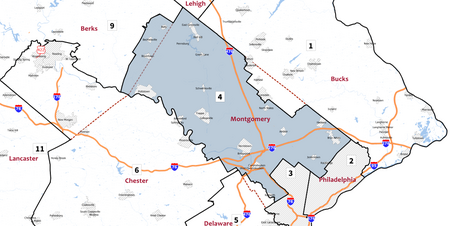Pennsylvania's 4th congressional district
| Pennsylvania's 4th congressional district | |
|---|---|
Interactive map of district boundaries since January 3, 2023 (Montgomery County outlined in red) | |
| Representative | |
| Population (2023) | 781,948[1] |
| Median household income | $103,971 |
| Ethnicity |
|
| Cook PVI | D+7[2] |
Pennsylvania's fourth congressional district, effective January 3, 2023, encompasses the majority of Montgomery County and most of Berks County northeast of Reading in southeastern Pennsylvania. In the 2020 redistricting cycle, the Pennsylvania district pushed northwards, further into Berks County, effective with the 2022 elections. The area has been represented by Democrat Madeleine Dean since 2019.
Recent election results from statewide races
[edit]| Year | Office | Results[3][4] |
|---|---|---|
| 2008 | President | Obama 58% – 41% |
| 2012 | President | Obama 55% – 45% |
| 2016 | President | Clinton 55% – 41% |
| Senate | McGinty 52% – 46% | |
| Attorney General | Shapiro 56% – 44% | |
| Treasurer | Torsella 55% – 43% | |
| Auditor General | DePasquale 51% – 46% | |
| 2018 | Senate | Casey Jr. 62% – 36% |
| Governor | Wolf 64% – 34% | |
| 2020 | President | Biden 59% – 40% |
| Attorney General | Shapiro 59% – 39% | |
| Treasurer | Torsella 56% – 41% | |
| Auditor General | Ahmad 54% – 42% | |
| 2022 | Senate | Fetterman 60% – 38% |
| Governor | Shapiro 66% – 32% |
History
[edit]From 2003 to 2013 the district included suburbs of Pittsburgh as well as Beaver County, Lawrence County, and Mercer County. The district had a slight Democratic registration edge, although it had voted for Republicans in several federal elections over the 2000s decade, including for President George W. Bush in 2000 and 2004, as well as Lynn Swann for governor in 2006. The heart of the district was a string of mostly white and middle class suburbs. Plum and Murrysville, two large and mainly residential boroughs, are the main towns in the suburban portion of the district that lies to the east of the city. Also included were the many suburban areas that make up northern Allegheny County and southern Butler County, Pennsylvania, including the larger communities of McCandless and Franklin Park, as well as several exclusive suburbs that have long been home to Pittsburgh's old money elite, including Fox Chapel and Sewickley. The northern suburbs had a generally moderate voting populace, which trends Democratic but makes up the swing vote, especially in races for national office. Further north, the district took on a different character. The suburban areas of Beaver County are somewhat less affluent and were heavily labor Democratic. The areas of Lawrence County and Mercer County had a more rural feel, but also had a union Democrat center within the city of New Castle.
This district changed drastically when Pennsylvania's new districts went into effect on January 3, 2013. Due to slower population growth than the nation as a whole, Pennsylvania lost a seat in Congress in reapportionment following the 2010 United States census, and this seat was effectively eliminated. Most of the 4th district was merged into a redrawn 12th district, and the previous 19th district was rebranded as the 4th. Thus from 2013 to 2018, the 4th district was located in south-central Pennsylvania and included all of Adams and York counties, as well as parts of Cumberland and Dauphin counties. During this time, the district was represented by Republican Scott Perry.
The Supreme Court of Pennsylvania redrew the state's congressional districts in February 2018 after ruling the previous map unconstitutional due to gerrymandering. The fourth district was reconfigured as a Democratic-leaning area to the northwest of Philadelphia for the 2018 election and representation thereafter. Geographically, it is the successor to the old 13th district, which was represented at the time by Democrat Brendan Boyle. Boyle, however, opted to run in the neighboring 2nd district, the geographic successor to the 1st district, represented by retiring incumbent Bob Brady. The bulk of Perry's representation, including York and Harrisburg, became part of a redrawn 10th district. Gettysburg and Adams County joined a new, heavily Republican 13th district, which was the successor to the old 9th district of retiring Congressman Bill Shuster. Areas to the south and east of York joined Lancaster in a redrawn, heavily Republican 11th district, the successor of Republican Lloyd Smucker's 16th district.[5]
Composition
[edit]| # | County | Seat | Population |
|---|---|---|---|
| 11 | Berks | Reading | 432,821 |
| 91 | Montgomery | Norristown | 868,742 |
Municipalities and CDPs with 10,000 or more people
[edit]- Lower Merion Township – 64,148
- Bala Cynwyd – 9,285
- Merion Station – 5,741
- Abington Township – 58,460
- Willow Grove (part) – 13,919
- Roslyn – 9,525
- Glenside (part) – 7,737
- Elkins Park (part) – 6,901
- McKinley (part) – 3,128
- Cheltenham Township – 37,452
- Glenside (part) – 7,737
- Elkins Park (part) – 6,901
- McKinley (part) – 3,128
- Wyncote – 3,081
- Upper Merion Township – 33,613
- King of Prussia – 24,695
- Horsham Township – 27,086
- Horsham – 15,193
- Maple Glen – 6,647
- Upper Dublin Township – 26,887
- Oreland (part) – 6,210
- Fort Washington (part) – 5,910
- Upper Moreland Township – 26,042
- Willow Grove (part) – 13,919
- Lower Providence Township – 25,625
- Audubon – 8,688
- Trooper – 5,408
- Eagleville – 4,880
- Exeter Township – 25,483
- Upper Providence Township – 24,398
- Pottstown – 23,433
- Muhlenberg Township – 21,915
- Riverview Park – 3,647
- Springfield Township – 20,866
- Limerick Township – 20,718
- Whitpain Township – 20,347
- Blue Bell – 6,506
- Whitemarsh Township – 19,800
- Plymouth Meeting (part) – 7,452
- Fort Washington (part) – 5,910
- Flourtown (part) – 4,789
- Lansdale – 18,773
- Plymouth Township – 18,316
- Plymouth Meeting (part) – 7,452
- Towamencin Township – 17,980
- Kulpsville – 8,159
- Upper Gwynedd Township – 17,112
- West Norriton Township – 16,204
- Lower Salford Township – 15,999
- Harleysville – 9,899
- Skippack Township – 14,408
- Skippack – 4,006
- East Norriton Township – 14,011
- Amity Township – 13,421
- Amity Gardens – 3,715
- Lower Moreland Township – 13,977
- New Hanover Township – 13,276
- Lower Gwynedd Township – 12,124
- Spring House – 3,978
- Lower Pottsgrove Township – 12,398
- Sanatoga – 9,048
- Pottsgrove – 3,471
- Douglass Township (Montgomery County) – 10,688
- Gilbertsville – 5,508
- Worcester Township – 10,588
2,500 – 10,000 people
[edit]- Conshohocken – 9,261
- Maidencreek Township – 9,167
- Blandon – 7,289
- Perkiomen Township – 8,958
- Hatboro – 8,238
- Maxatawny Township – 7,645
- Kutztown University – 2,918
- Ambler – 6,807
- Bern Township – 6,600
- Lower Heidelberg Township – 6,369
- Upper Pottsgrove Township – 5,945
- Halfway House – 3,273
- Longswamp Township – 5,551
- Colebrookdale Township – 5,122
- Collegeville – 5,043
- Royersford – 4,940
- Lower Frederick Township – 4,873
- Jenkintown – 4,719
- Washington Township – 4,469
- Laureldale – 4,277
- Boyertown – 4,264
- Kutztown – 4,162
- Fleetwood – 4,049
- Ruscombmanor Township – 4,005
- Trappe – 3,995
- Alsace Township – 3,849
- Oley Township – 3,815
- West Pottsgrove Township – 3,793
- Stowe – 3,645
- Upper Frederick Township – 3,703
- Douglass Township (Berks County) – 3,683
- Rockland Township – 3,649
- Richmond Township – 3,617
- Greenwich Township – 3,431
- North Wales – 3,426
- Upper Salford Township – 3,182
- Earl Township – 3,096
- Hereford Township – 3,005
- Ontelaunee Township – 2,720
- Rockledge – 2,638
List of members representing the district
[edit]The district was organized from the Pennsylvania's at-large congressional district in 1791
1791–1793: one seat
[edit]| Representative | Party | Years | Cong ress |
Electoral history | |
|---|---|---|---|---|---|
| District first established March 4, 1791 | |||||
| Daniel Hiester (Montgomery County) |
Anti-Administration | March 4, 1791 – March 3, 1793 |
2nd | Redistricted from the at-large district and re-elected in 1791. Redistricted to the at-large district. | |
1795–1843: two, then one, then three seats
[edit]District created in 1795 with two seats from the Pennsylvania's at-large congressional district. The second seat was eliminated in 1813. The second seat was restored in 1823 along with a third seat.
1843–present: one seat
[edit]Recent elections
[edit]| Party | Candidate | Votes | % | |
|---|---|---|---|---|
| Democratic | Jason Altmire | 130,480 | 51.92% | |
| Republican | Melissa Hart (Incumbent) | 120,822 | 48.08% | |
| Majority | 9,658 | 3.84% | ||
| Turnout | 251,302 | 100% | ||
| Party | Candidate | Votes | % | |
|---|---|---|---|---|
| Democratic | Jason Altmire (Incumbent) | 186,536 | 55.86% | |
| Republican | Melissa Hart | 147,411 | 44.14% | |
| Party | Candidate | Votes | % | |
|---|---|---|---|---|
| Democratic | Jason Altmire (Incumbent) | 120,827 | 50.81% | |
| Republican | Keith Rothfus | 116,958 | 49.19% | |
| Party | Candidate | Votes | % | |
|---|---|---|---|---|
| Republican | Scott Perry | 181,603 | 59.74% | |
| Democratic | Harry Perkinson | 104,643 | 34.42% | |
| Independent | Wayne W. Wolff | 11,524 | 3.79% | |
| Libertarian | Michael B. Koffenberger | 6,210 | 2.04% | |
| Party | Candidate | Votes | % | |
|---|---|---|---|---|
| Republican | Scott Perry (Incumbent) | 147,090 | 74.54% | |
| Democratic | Linda D. Thompson | 50,250 | 25.46% | |
| Party | Candidate | Votes | % | |
|---|---|---|---|---|
| Republican | Scott Perry (Incumbent) | 220,628 | 66.06% | |
| Democratic | Joshua T. Burkholder | 113,372 | 33.94% | |
| Party | Candidate | Votes | % | |
|---|---|---|---|---|
| Democratic | Madeleine Dean | 210,219 | 63.45% | |
| Republican | Daniel David | 121,117 | 36.66% | |
| Party | Candidate | Votes | % | |
|---|---|---|---|---|
| Democratic | Madeleine Dean (incumbent) | 264,637 | 59.5 | |
| Republican | Kathy Barnette | 179,926 | 40.5 | |
| Total votes | 444,563 | 100.0 | ||
| Democratic hold | ||||
| Party | Candidate | Votes | % | |
|---|---|---|---|---|
| Democratic | Madeleine Dean (incumbent) | 224,799 | 61.3 | |
| Republican | Christian Nascimento | 141,986 | 38.7 | |
| Total votes | 366,785 | 100.0 | ||
| Democratic hold | ||||
Historical district boundaries
[edit]In the very early 19th century, this district included all or part of Bucks County.
-
2003–2013
-
2013–2019
-
2019–2023
See also
[edit]References
[edit]- ^ "My Congressional District: Congressional District 4 (118th Congress), Pennsylvania". United States Census Bureau.
- ^ "2022 Cook PVI: District Map and List". Cook Political Report. Retrieved January 10, 2023.
- ^ https://davesredistricting.org/maps#viewmap::b0a94d77-5d99-41c5-bc01-5859a6e1f3e6
- ^ 2022 PA Statewides by CD. docs.google.com (Report).
- ^ Cohn, Nate; Bloch, Matthew; Quealy, Kevin (February 19, 2018). "The New Pennsylvania House Districts Are In. We Review the Mapmakers' Choices". The Upshot. The New York Times. Retrieved February 20, 2018.
- ^ "CNN Elections Results 2006". CNN. Retrieved November 9, 2006.
- ^ "2008 General Election: Representative in Congress". Pennsylvania Department of State. November 4, 2008. Retrieved July 24, 2018.
- ^ "2010 General Election: Representative in Congress". Pennsylvania Department of State. November 2, 2010. Retrieved July 24, 2018.
- ^ "2012 General Election: Representative in Congress". Pennsylvania Department of State. November 6, 2012. Retrieved July 24, 2018.
- ^ "2014 General Election: Representative in Congress". Pennsylvania Department of State. November 4, 2014. Retrieved July 24, 2018.
- ^ "2016 General Election: Representative in Congress". Pennsylvania Department of State. November 8, 2016. Retrieved July 24, 2018.
- ^ "2018 General Election: Representative in Congress". Pennsylvania Department of State. November 6, 2016. Retrieved November 12, 2018.
- ^ "2020 Presidential Election – Representative in Congress". Pennsylvania Department of State. Retrieved November 25, 2020.
- ^ "2022 General Election Official Returns - Representative in Congress". Pennsylvania Department of State.
- Martis, Kenneth C. (1989). The Historical Atlas of Political Parties in the United States Congress. New York: Macmillan Publishing Company.
- Martis, Kenneth C. (1982). The Historical Atlas of United States Congressional Districts. New York: Macmillan Publishing Company.
- Congressional Biographical Directory of the United States 1774–present



